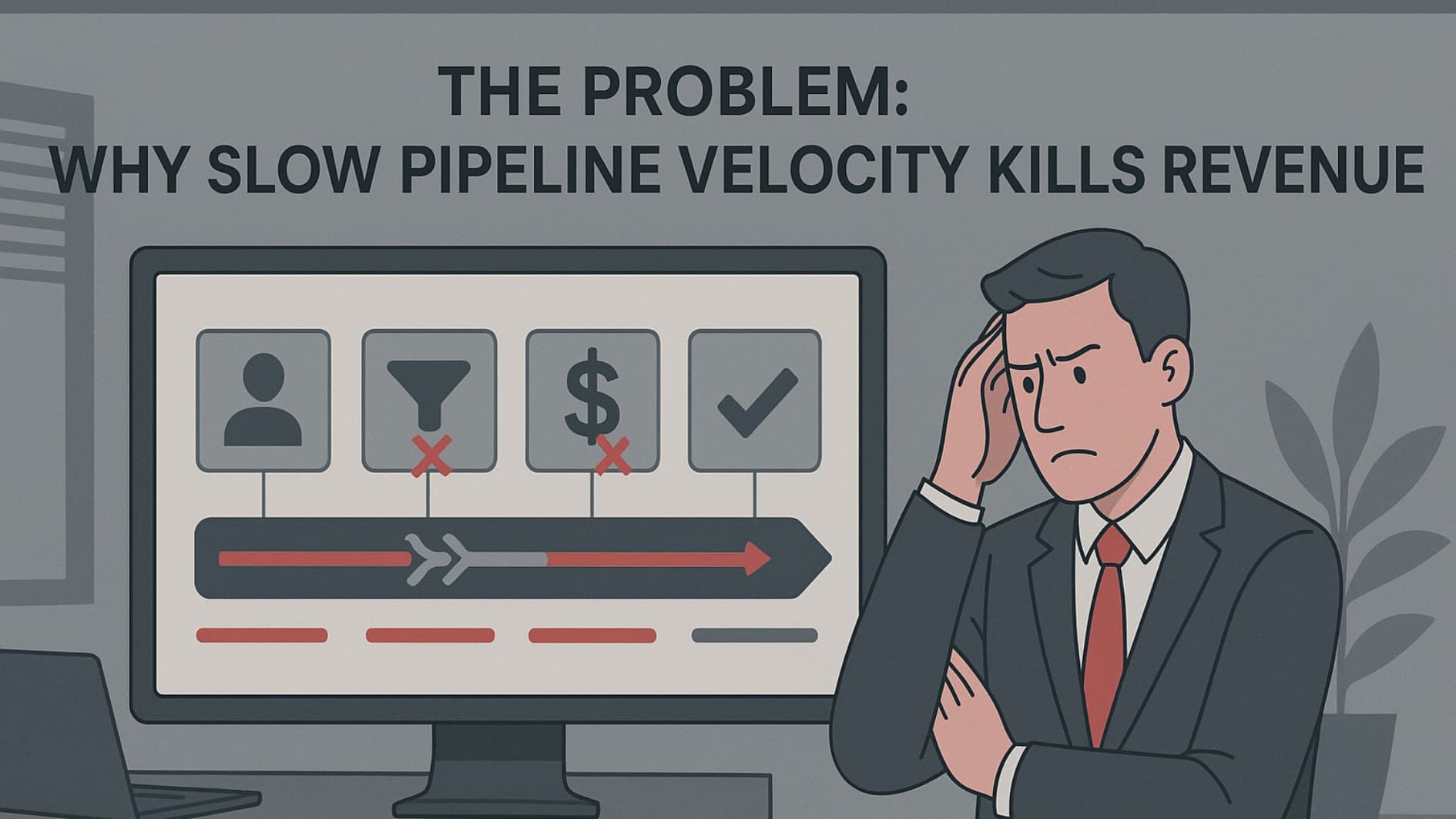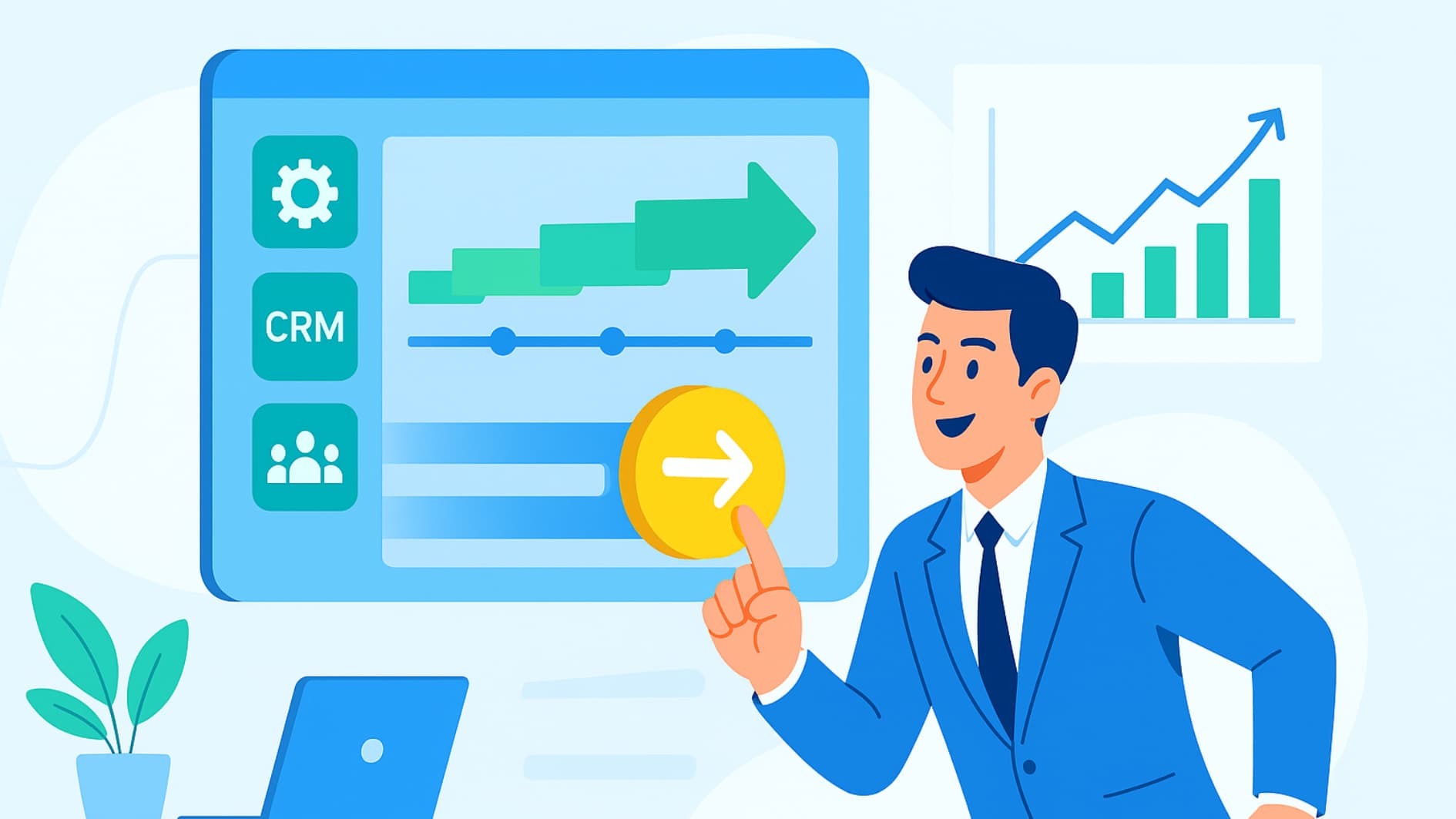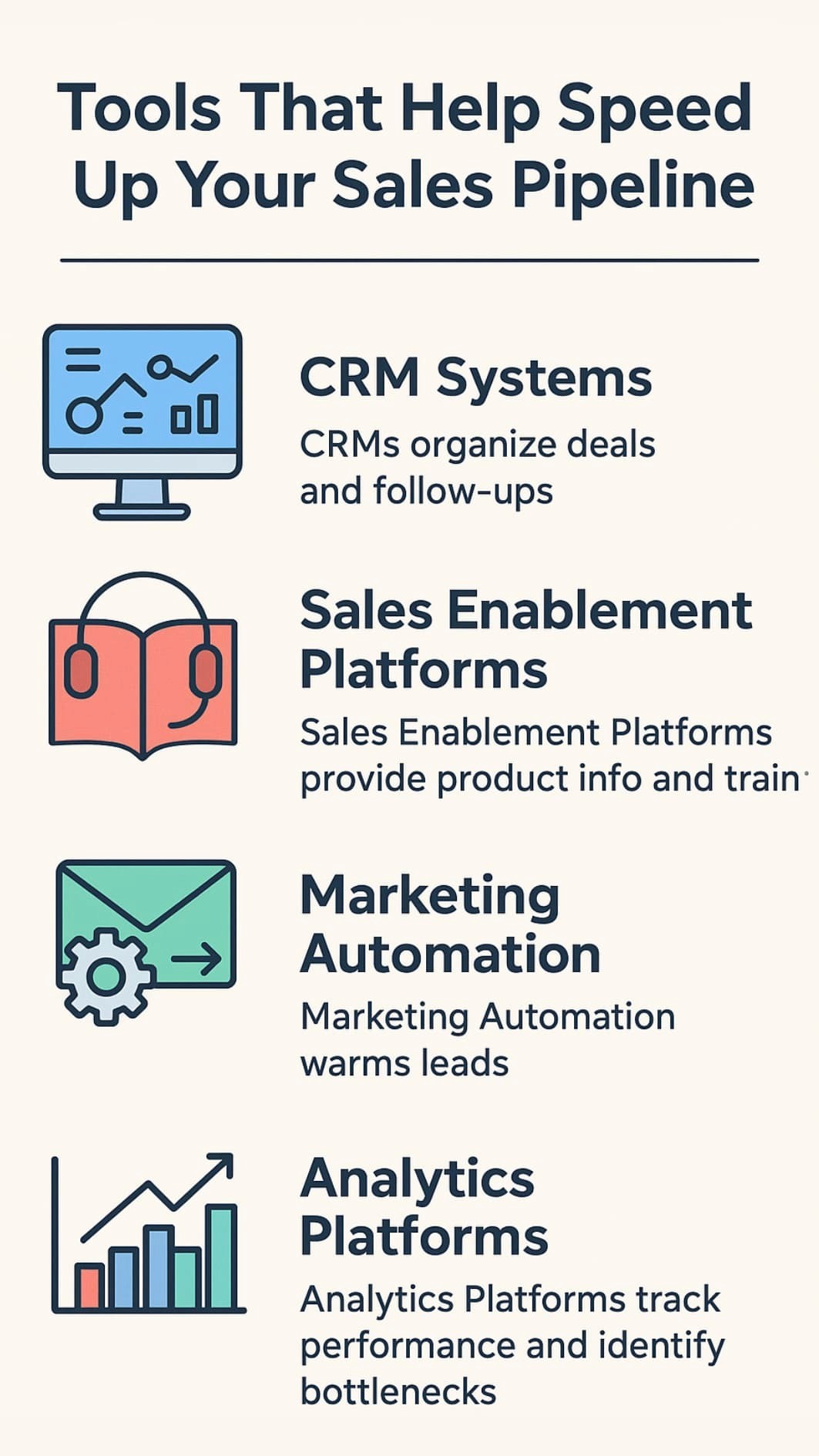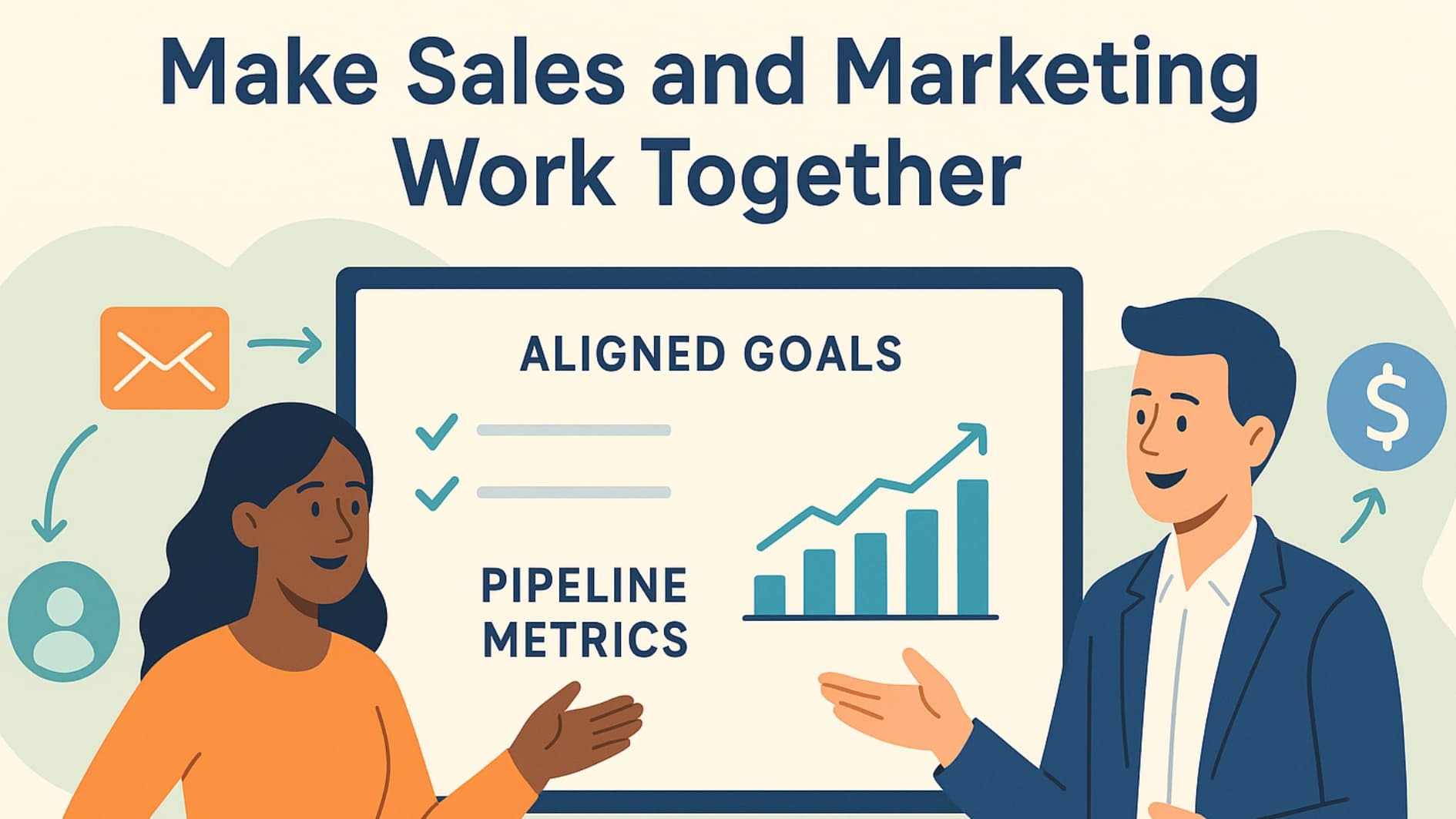Pipeline Generation Tactics
Increasing sales pipeline velocity means making your deals move faster through the sales funnel, from first contact to closed won. When deals move quickly, your revenue grows faster, and sales reps stay motivated.
At Hyperke, we help many SaaS and service B2B companies improve their sales velocity with simple outbound sales strategies like cold emailing and calling. In this guide, we share easy ways to shorten sales cycles, boost lead quality, and raise win rates.
Ready to make your sales process faster and close more deals? Keep reading.
Key Takeaways
Speed up your sales cycle by cutting delays with automation and better communication.
Focus sales efforts on qualified leads to improve win rates and conversion rates.
Train your sales team regularly and use data to spot and fix slow points in the sales pipeline.
The Problem: Why Slow Pipeline Velocity Kills Revenue

When your sales pipeline moves slowly, your revenue slows down too. The longer your average sales cycle, the fewer deals you close in a set period. This means fewer paying customers and lost revenue chances. For B2B companies, this is tough because sales cycles are usually long, and deals are big.
At Hyperke, we’ve seen pipelines where deals sit for 60 days or more. When that happens, sales velocity drops. Sales velocity is how fast deals move through your pipeline. It’s calculated with this formula:
Sales Velocity = (Number of Qualified Opportunities × Average Deal Size × Win Rate) ÷ Length of Sales Cycle
If deals move slowly, the length of the sales cycle gets bigger. That makes your sales velocity number smaller. When velocity is low, revenue slows down, and your sales pipeline gets clogged, leaving your sales team frustrated. Sales reps hate it when deals stall, and marketing teams feel bad when lead quality is low because it leads to lost deals.
For example, one client had a 75-day sales cycle. After we helped them shorten it by 20%, they closed 30% more deals in the same time. Their win rate also went up. This shows how important pipeline velocity is to sales success.
Actionable Strategies to Speed Up Your Sales Pipeline

Shorten Sales Cycles with Automation
Sales reps spend a lot of time on tasks that don’t bring in money, like writing notes, updating spreadsheets, and waiting on approvals. These tasks add extra days to your sales cycle.[1]
Automation helps cut this time. Using CRM systems lets sales reps update deal status in real time. This keeps the sales funnel moving smoothly. At Hyperke, we help sales teams use sales enablement tools that give easy access to sales content and send automatic reminders to follow up.
Better communication between sales and marketing also makes a difference. When both teams share data quickly, quality leads move faster through the sales funnel.
Scheduling demos and onboarding quickly helps too. We’ve seen deals slow when prospects wait days for demos. Making demos easy and quick keeps the sales process moving.
Bottlenecks happen when approvals or handoffs slow things down. We help find these problem spots and fix them. Sometimes, removing just one approval step can cut days from the sales cycle.
ProTip: Use CRM and sales enablement platforms to track deals in real time and reduce lost deals.
Improve Lead Qualification
Not all leads are worth your sales team’s time. Chasing the wrong leads slows down your sales velocity. At Hyperke, we focus on refining the Ideal Customer Profile (ICP) to find quality leads.
Lead scoring uses data about buyer interest and pain points to rank leads. This helps sales reps focus on sales-qualified leads (SQLs) with the best chance of closing.
Focusing on quality leads means sales reps spend less time on bad leads and more on good ones. This raises win rates and speeds up deals moving through the sales funnel.
Better lead qualification also means your sales efforts are more efficient. We’ve seen clients double their deals closed just by improving lead quality.
Want to refine your Ideal Customer Profile and improve lead targeting? Learn how Hyperke helps agencies qualify better leads .
ProTip: Use intent data and pain points to find and focus on high-potential prospects.
Train Your Sales Team Better
Sales success depends a lot on how well your sales team knows your product and how good they are at selling. Sales reps who understand the product deeply can answer questions faster and with more confidence.[2]
Training on sales skills and negotiation helps close deals faster. Negotiations often decide if a deal is closed won or closed lost, especially in B2B sales where deal size is big.
When sales reps understand customer pain points and how to solve them, deals move faster through the pipeline. We suggest regular training sessions to keep skills sharp and improve win rates.
ProTip: Have regular training and role-playing to boost sales reps’ confidence and sales performance.
Use Data to Make Smarter Moves
Data tells you where deals are getting stuck. Tracking key things like how long your sales cycle is, your win rate, and average deal size helps find problem areas.
We use data to find bottlenecks. For example, if many deals hang up at the proposal stage, we look at why and fix it.
Data also helps calculate sales velocity using the sales velocity formula. This way, you can watch if your changes work over time.
ProTip: Use dashboards to see sales results in real time and act fast when deals slow down.
Adjust Pricing and Offers
Sometimes small changes in price or special offers push prospects to buy faster. We have seen how testing pricing models and giving time-limited deals increase urgency.
Limited-time offers make prospects hurry, which cuts down the length of your sales cycle. Bundling services can also increase average deal size, which boosts your sales velocity number.
ProTip: Try different prices and offers to find what makes your customers buy faster.
Follow Up Quickly and Often
Following up fast is key. Sales reps who reply in real time keep prospects interested and increase conversion rates.
Sometimes leads go quiet but are still worth chasing. Remarketing to these stagnant leads can bring deals back to life. Instead of writing them off as closed lost, a quick call or email can move them to closed won.
Many sales teams lose deals simply because they don’t follow up quickly or enough. Using reminders or automating follow-ups helps keep deals moving.
ProTip: Set up automatic follow-up reminders so no lead is forgotten.
Real-Life Wins from Faster Pipeline Velocity
Company X: Shortened Sales Cycles with Automation
Company X started using CRM and sales enablement tools. Their sales cycle dropped from 50 days to 35 days. This led to 25% more deals closed in the same time and faster revenue growth.
Company Y: Better Lead Qualification Increased Win Rates
By sharpening their ICP and using lead scoring, Company Y raised lead quality. Their win rate percentage jumped by 18%, and sales reps spent time on fewer but better leads. This made their sales funnel more efficient, which shows how improving lead quality can impact pipeline velocity and sales success.
What We Learned
Automation helps sales teams close deals faster.
Better lead qualification improves win rates and conversion rates.
Using data helps fix slow parts of the sales process.
Tools That Help Speed Up Your Sales Pipeline

CRM Systems: Keep Data and Communication Clear
CRM systems keep data and communication clear to help your B2B sales teams close more deals efficiently. CRMs track every deal and lead in real time. They reduce lost deals and speed up follow-ups by helping sales reps stay organized.
Sales Enablement Platforms: Help Your Sales Team Sell Better
These tools give sales reps easy access to product info, scripts, and training. This helps reps answer questions faster and close deals sooner.
Marketing Automation: Warm Up Leads Before Sales Talks
Marketing automation keeps leads engaged until they are ready for a sales call. This improves lead quality and increases qualified opportunities.
Analytics Platforms: Watch and Improve Sales Performance
Analytics tools track sales velocity metrics and other key numbers. This helps sales managers set goals and find bottlenecks in the sales funnel.
How to Measure and Track Pipeline Velocity
Important Numbers to Watch
Sales cycle length: How many days it takes to close deals.
Lead conversion rate: How many leads become paying customers.
Average deal size: The typical value of each closed deal.
Set Goals That Make Sense
Look at your current sales cycle and win rates. Set goals to shorten your sales cycle or increase your win rate in a set period. This helps grow your revenue steadily.
Use Data to Fix Bottlenecks
Find where deals slow down and fix those steps. This improves sales velocity and sales team performance.
Make Sales and Marketing Work Together

Agree on What a Qualified Lead Is
Sales and marketing must have the same idea of what makes a qualified lead. This improves lead quality and conversion rates.
Set Clear Expectations (SLA)
A Service Level Agreement (SLA) sets rules for how marketing hands leads to sales and how fast sales follows up. This keeps everyone on track.
Use Marketing Automation to Help Sales
Marketing uses automation to nurture leads until they’re ready to talk to sales. This raises the number of qualified leads in the sales funnel.
Track Marketing’s Effect on Sales
Seeing how marketing affects deals closed helps both teams improve lead quality and sales velocity.
Key Ways to Speed Up Your Pipeline
Strategy | Why It Helps |
Automation | Shortens Sales Cycles |
Lead Qualification | Focus Sales on High-Quality Leads |
Sales Skills Training | Closes Deals Faster |
Use Data | Fixes Slow Points in Sales Process |
Pricing and Offers | Makes Buyers Decide Faster |
Follow Up Well | Converts More Leads |
Align Sales and Marketing | Improves Lead Quality & Conversion Rates |
If your business is scaling into new B2B or wholesale markets, explore how Hyperke accelerates Wholesale Expansion.
FAQ
What is sales pipeline velocity and why does it matter?
Sales pipeline velocity shows how fast qualified opportunities convert into paying customers. It's a metric we've found crucial for measuring the health of our sales development efforts. By tracking things like average sales cycle length and win rate percentage, B2B companies get a clear picture of their sales performance.
Our sales teams rely on velocity metrics to spot bottlenecks, speed up revenue generation, and close more deals efficiently.
How do you calculate sales pipeline velocity?
The sales velocity formula looks like this:
(Number of deals × Average deal size × Win rate) ÷ Length of your sales cycle
Sales reps use this velocity equation over a set period, usually monthly or quarterly, to measure how efficiently deals move through the sales funnel. When the velocity number goes up, it means we're converting opportunities faster, which directly impacts our revenue streams.
What factors affect sales pipeline velocity the most?
Poor lead quality often drags down sales cycles - we see this frequently with B2B sales. Other common problems: unclear sales strategy and customers taking too long to decide. The good news? Sales teams can boost velocity by focusing on qualified leads, improving conversion rates, and reducing the number of days deals stay open.
Looking at intent data, analyzing lost deals, and addressing customer pain points helps minimize closed lost outcomes.
How can sales and marketing teams improve sales velocity?
Marketing and sales alignment is key. Our sales reps use real time insights to spot sales opportunities early and refine the sales process. We track essential metrics like:
Conversion rates from marketing qualified leads
Average deal size trends
Total number of closed won deals
Win rates by product/service
Sales cycle length by segment
This data helps strengthen sales enablement efforts. By monitoring these metrics consistently, B2B companies create more efficient sales processes that drive sustainable sales success.
Conclusion
At Hyperke, data shows a direct link between sales pipeline speed and revenue growth. Trimming unnecessary delays, zeroing in on high-quality leads, providing consistent team training, and leveraging performance metrics all contribute to improved sales velocity.
This isn't about rushing,it's about precision and efficiency at each stage. Begin with baseline measurements of your sales cycle duration and conversion rates. From there, implement incremental improvements while watching the sales funnel metrics.
Ready to boost your sales pipeline velocity? Talk to Hyperke and turn precision into performance.
References
https://www.marketsandmarkets.com/AI-sales/sales-team-productivity-automation-impact-measurement
https://thesalescollective.com/sales-training-statistics-usa
